 Evidence of the cost of hunger and malnutrition is often presented to make the case for increased investment and commitment to address these serious challenges. But equally important to making this case – and perhaps less commonly cited – is evidence of the benefits of ending hunger and malnutrition.
Evidence of the cost of hunger and malnutrition is often presented to make the case for increased investment and commitment to address these serious challenges. But equally important to making this case – and perhaps less commonly cited – is evidence of the benefits of ending hunger and malnutrition.
Prompted by suggestions from the Compact2025 Leadership Council, the Compact2025 team conducted a literature review on the benefits of ending hunger and malnutrition, identifying four major areas of benefit: economic, health, social, and education. While the strength of the evidence across these four areas varies, the review provides valuable insight into the major findings as well as remaining gaps in the literature. Read more in a note summarizing the main findings of the literature review and a table detailing key findings from each resource. All of the literature reviewed is also available on the Resources page.
- Economic Benefits: Several country-level studies and literature reviews detail economic benefits from ending hunger and malnutrition including observed increases in productivity and earnings from improved childhood and adult nutrition status, as well as modeled gains in productivity, earnings, and GDP from investments in nutrition-specific interventions and, less commonly, agriculture.
- Health Benefits: Studies that review the health benefits of ending hunger and malnutrition present evidence for decreased morbidity and mortality, anthropometric improvements, improvements in the treatments of diseases such as tuberculosis and HIV, and better cognitive development.
- Social Benefits: Social benefits to ending hunger and malnutrition include reduced risk of political unrest and conflict, improved status of women and related reductions in their risk of negative impacts from emergencies or conflict, reductions in individual and household-level violence, as well as reduced likelihood of criminal activity and increased self-control.
- Education Benefits: Improved food security and nutrition also improves education outcomes, including school enrollment, grade attainment and completion, as well as academic achievements. Several studies found the positive impact of food security and nutrition to be greater for girls.
Gaps in the current research include cost-benefit analyses for investments in different pathways for improving nutrition, such as women’s empowerment and crop and dietary diversity, as well as the incorporation of social benefits in cost-benefit ratios. Efforts to bring together the currently scattered work on economic, health, and social benefits within a single framework or study could also be helpful. So might separating some of the health and economic benefits that are often aggregated into broader cost-benefit ratios or DALY measurements.
We welcome input regarding (1) key studies we should add, (2) what would be the value-added of further studies on the subject, and (3) what are the current knowledge gaps for estimating/modeling the benefits of ending hunger and undernutrition (see last section of the note). Please send your comments and suggestions to IFPRI-Compact2025@cgiar.org.
Download:
- Summary of literature review on benefits of ending hunger and malnutrition
- Table detailing key findings from each resource
Blog post prepared by Laura Zseleczky.


